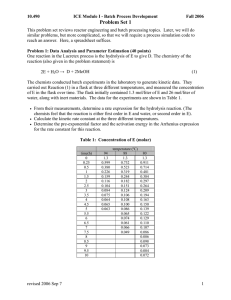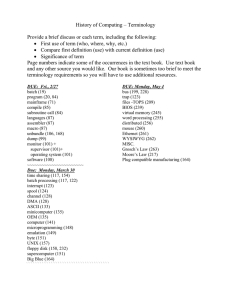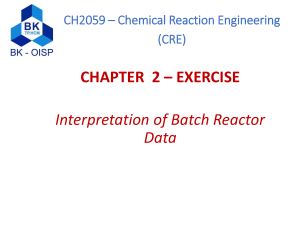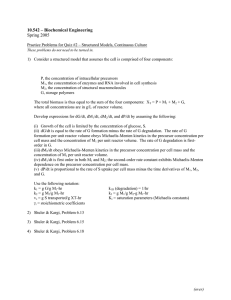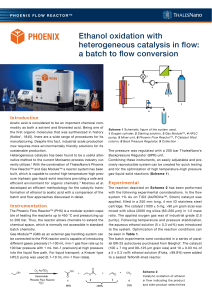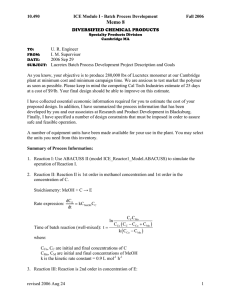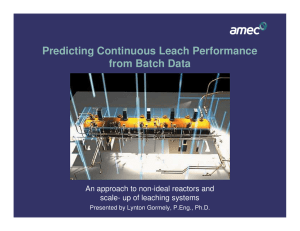10.37 Problem set 7 Due 4/11/07 Problem 1.
advertisement
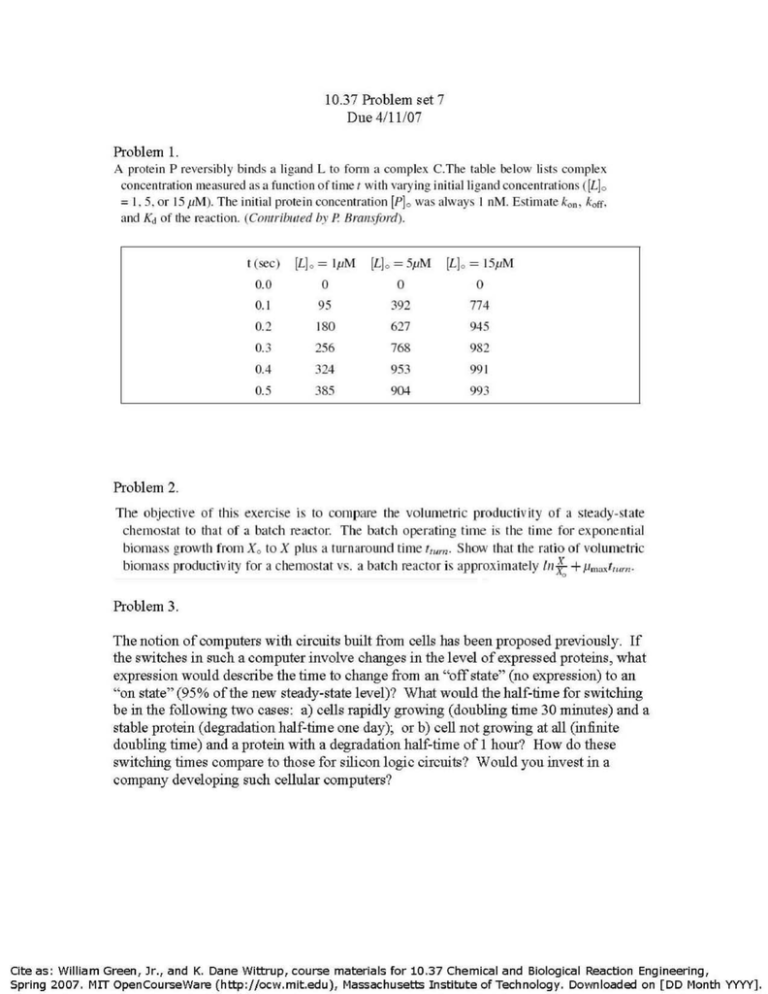
10.37 Problem set 7 Due 4/11/07 Problem 1. A protein P reversibly binds a ligand L to f m l a complex C.The table below lists complex concentration measured as a function of time t with varying initial ligancl concentrations ( [L], = 1. 5 . or 15 pM). The initial protein concentration [PI, was always 1 nM. Estimate k,,, kd, and Kd of the reaction. (Conaributed by 19 Bmmford). Problem 2. The objective of this exercise is to compare the volumetric productivity of a steady-state chenlostat to that of a batch reactor. The batch operating time is the time for exponential biomass growth from X, to X plus a turnaround time F~,,,,.Show that the ratio of volumetric X frmnxttum. biomass productivity for a chemostat vs. a batch reactor i s approximately !n ?i; + Problem 3. The notion of computers with circuits built from cells has been proposed previously. If the switches in such a computer involve changes in the level of expressed proteins, what expression would describe the time to change from an "off state" (no expression) to an "on state" (95% of the new steady-state level)? What would the half-time for switching be in the following two cases: a) cells rapidly growing (doubling time 30 minutes) and a stable protein (degradation half-tune one day); or b) cell not growing at all (infinite doubling time) and a protein with a degradation half-time of 1 hour? How do these switchmg times compare to those for silicon logic circuits? Would you invest in a company developing such cellular computers? Cite as: William Green, Ir., and K. Dane Wittrup, course materials for 10.37 Chemical and Biological Reaction Engineering, Spring 2007. M I T OpenCourseWare (http://ocw.mit.edu), Massachusetts Institute of Technology. Downloaded on [DD Month W].


